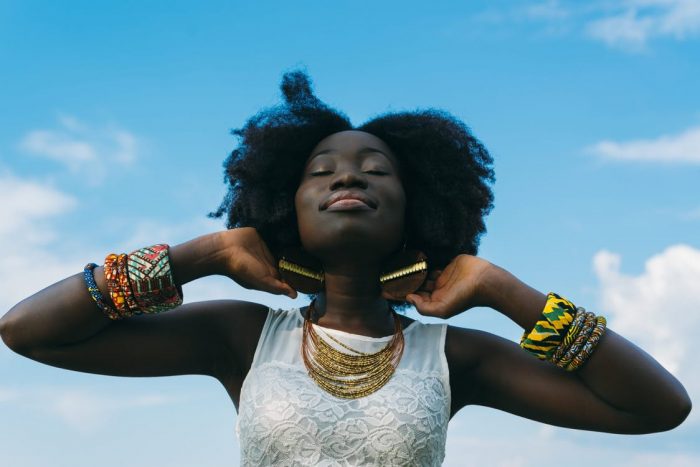Ujjayi is one of the easiest and most effective pranayama techniques to teach yoga students.
I assume all yoga teachers remind their students continuously to “breathe” when they are teaching asana (poses). This is a sacred tenet of yoga asana—keep the breath in mind while doing the poses.
Breathing is an unconscious physiological act most of the time—and rightly so. Heaven forbid we had to think about breathing just to stay alive. But learning to breathe completely and fully is one of the hardest things for students to learn and do consistently.
We often hold our breath unconsciously when we are concentrating, doing something difficult, or when we are fearful. Thankfully we can’t do this for too long, for obvious reasons.
I sometimes watch my students holding their breath when we’re doing balance poses—as if holding our breath will somehow keep us from falling. I will usually jokingly mention that I can’t hear anyone breathing. Often, when I tell the class to come out of the pose, I can hear an audible gasp for air.
Sometimes when I bring the class out of the pose and say, “after you finish your next exhalation..,” students have come out of the pose before I even finish the sentence, letting me know that they weren’t focusing on their breath, but instead on my words. They weren’t experiencing their bodies and breath working in sync.
In beginner classes, I teach students to breathe more consciously and deeply by having them first learn belly breathing and then the three-part yogic breath or complete breath. Students are completely unconscious of how shallowly they normally breathe.
By intermediate level classes, I introduce Ujjayi pranayama. I first teach it with the students lying down, then sitting, and finally I introduce it into the asana practice.
Pranayama is often described as “breath control.” However, pranayama breathing techniques are far more subtle and multidimensional than these simplistic words imply.
The seminal book on pranayama, Prana Pranayama Prana Vidya by Swami Niranjananada Saraswati of the Bihar School of Yoga, says, ”Whereas prana is the vital force, pranayama is the process by which the internal pranic energy is increased.” The word pranayama is “actually comprised of the words prana and ayama which mean ‘pranic capacity or lengthen.’ Pranayama is a technique through which the quality of prana in the body is activated to a higher frequency.”
Unless I feel it is appropriate and beneficial to my students, I try not to use a lot of jargon and esoteric yoga philosophy and terminology in my teaching. One of the things I do find beneficial and easy for my students to grasp is the concept of vayus. Understanding the direction that pranic energy moves in the body helps students to tune in to their bodies on deeper levels and to really sense the energetic flow of their breath. I mostly focus on the first two vayus: the prana (upward movement) and apana (downward movement).
Ujjayi is not really breath retention. Ujjayi, as defined in Prana Pranayama Prana Vidya, “is the one practice that may be practiced from any position, standing, sitting, or prone…It is an indispensable part of many techniques and is performed with asanas…”
Ujjayi is done by gently constricting the back of the throat at the glottis. This is the part of the vocal cords where sound is produced.
By gently constricting the glottis while breathing, a sound is produced that is a little like the ocean or the sound you hear when you put a conch shell to your ear. Ujjayi is done while breathing through the nose with the lips gently closed. If done correctly, the inhalation is naturally longer than usual and the exhalation is even longer than the inhalation.
What my students inevitably find when using Ujjayi with asana is that they can go deeper into the pose and stay in the pose longer without fatigue. By focusing their awareness on the flow of their breath, they let go of the mind chatter and their bodies relax into the pose more easily.
When it’s time to come out of the pose, instead of saying “after your next exhalation” I now say “when you finish your next exhalation” to keep them connected to the breath until the very end of the pose. This has been a real game changer in having my students really feel how powerfully the breath is connected to every pose.
Some of the poses that I find easily avail themselves of the Ujjayi breath when first teaching it are ones where there is dynamic movement on the in and out breath—cat/cow pose, dynamic bridge pose, and dynamic uttanasana. (Dynamic means: up on the in breath and down on the out breath.) These are poses that students can really experience the length of in and out breaths. When they truly coordinate the breath with the movement, they find that the out breath part of the pose takes longer.
When students learn to use the Ujjayi breath with balance poses and backbends, poses that typically cause them to hold their breath, they are really amazed at the difference it makes.
Using the Ujjayi breath can release tension in tight areas of the body. It diminishes distractions and increases self-awareness. Ujjayi holds the key to yoga students fully experiencing letting go of the mind and staying present in the pose. This, after all, is the goal. As Pantanjail says in the second yoga sutra, “Yogas citta vritti nirodhah”—translated to: “The restraint of the modifications of the mind-stuff is yoga.”
~


 Share on bsky
Share on bsky





Read 2 comments and reply